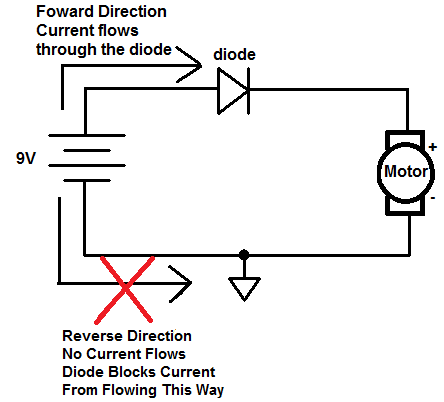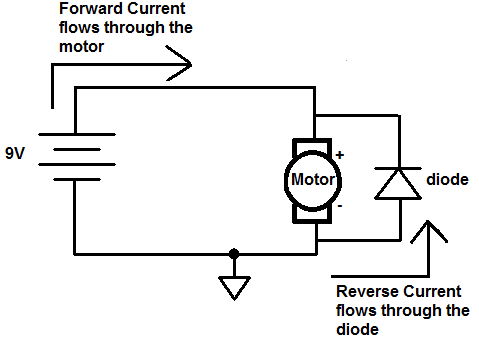What is a Protection Diode?

A protection diode (also called a safety diode) is a diode that is used in a circuit to protect the circuit from reverse voltage and current. Reverse voltage and current is power that flows in the opposite direction of the usual or conventional way; instead of current travelling from the positive side of the voltage source to ground and then to the negative side of the voltage source, it travels from the negative side of the voltage source, through ground, and to the positive side of the voltage source, so, in essence, reverse. A protection diode is used to block this reverse current flow; this helps to protect components in circuitry that can be damaged from reverse current.
A diode is a device that allows current to flow in through one direction but not the other. Therefore, it can be used in a circuit to only allow current to flow only in the forward direction but blocks current in the reverse direction. This can be particularly useful when components in the circuitry can be severely damaged by current flowing through them in the reverse (wrong) direction. One such device which is sensitive to reverse power is an LED, which usually has a maximum reverse voltage of about 5 volts. If more than 5 volts drops across it in the reverse direction, the LED will allow current to pass through in the reverse direction, and, thus, the LED can be permanently damaged. However, with a power diode (any diode with a 1N400X marking) acting as a protection diode, no current can pass through, since the diode essentially acts as an open circuit when in the reverse direction.
Below is a visual demonstrating this property of a protection diode:

This diagram again shows how a diode allows current to flow in the forward direction but blocks current from flowing in the reverse direction. This serves to protect devices in a circuit that could be damaged from a reverse current flow.
Even though the above circuit provides protection via a diode, there is a better way to use a protection diode in a circuit.
The circuit below shows the improved design of using a protection diode in a circuit.

To protect a component in a circuit, a diode is normally placed reverse biased in parallel with the component.
When a diode is placed in parallel with the component you want protected reverse biasd, if current flows through the circuit in reverse, the current flows through the diode, bypassing the motor. With large amounts of current, some current may still pass through the motor, but it will be split between the diode and the motor. Therefore, all of the current will not flow through the motor, as would be the case if there was no diode present.
This setup with the diode in reverse biased works better than the setup before, because in the first setup, the diode consumes power. If it's a silicon diode, it typically consumes about 0.7V of power. Therefore, it isn't power efficient. With this setup, the diode only consumes current when there is reverse current.
Also another reason to build it this way is the limitations of a diode in reverse biased. In the first circuit, with reverse current, the diode is reverse biased. Current will not flow up to the point of the diode's peak reverse voltage. The peak reverse voltage is the maximum voltage that a diode can withstand to its cathode terminal. Any voltage beyond this will cause the diode to break down and conduct current across. For example, with a 1N4001 diode, the peak reverse voltage it can withstand is 50V. Therefore, if the voltage exceeds 50V to the cathode terminal, it will break down and current will conduct. This is the limitation of the first protection diode circuit design. However, with the second design, there is no limitation, because the diode is forward biased with reverse current. Therefore, it will never reach a breakpoint with this setup.
Therefore, this setup, with the diode in parallel reverse biased with the component to protect, is superior in design and an improved version of a protection diode circuit.
To find out in more detail how to connect a protection diode in a circuit, check out How to Connect a Protection Diode in a Circuit.
Related Resources
Types of Diodes
How to Test a Diode
